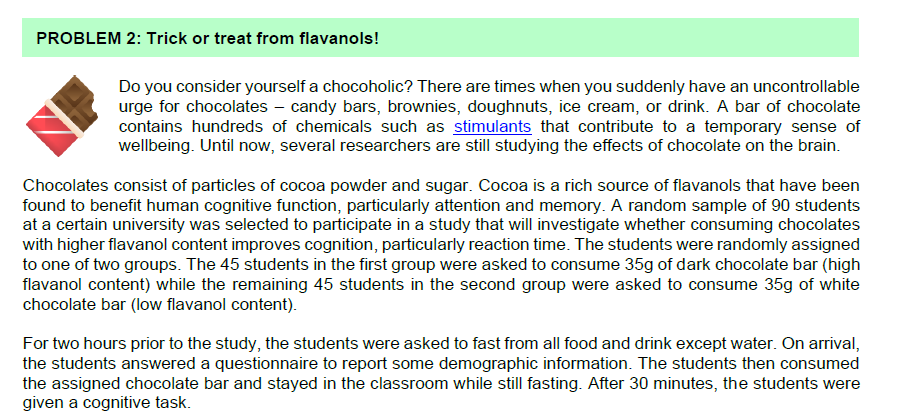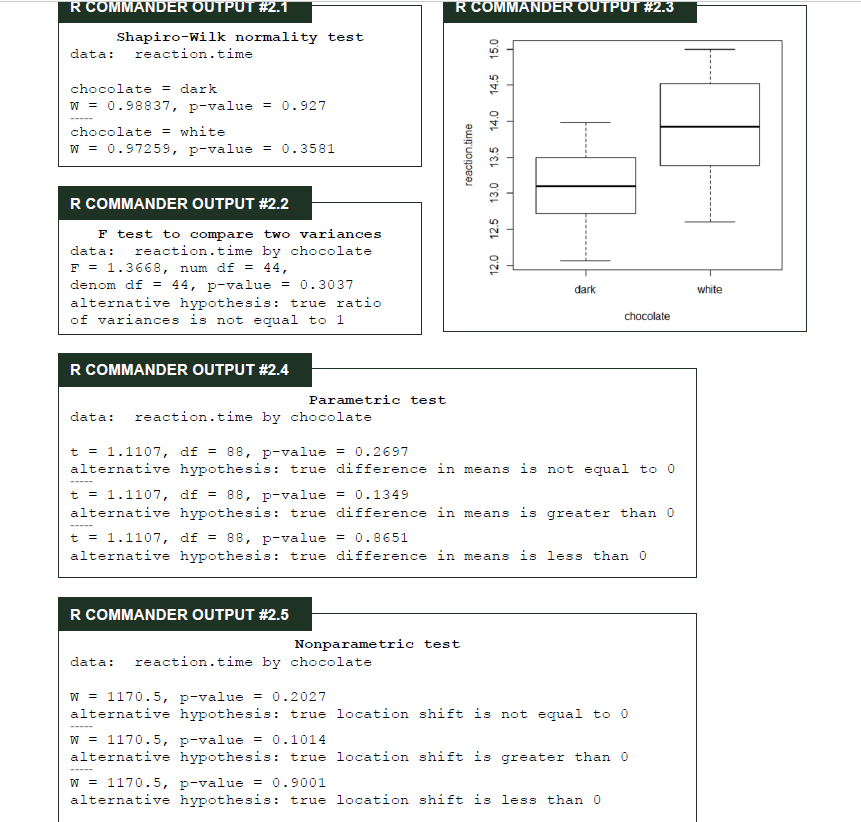The researcher in this study wishes to investigate whether consuming chocolates with higher flavanol content improves cognition, particularly reaction time. The variable of interest is the total reaction time of the student who consume the white and dark chocolate which is in the nominal level of measurement. The random sample of students illustrates the use of independent samples. The p-values obtained from the Shapiro-Wilk test indicate that the assumption of homogeneity of variances was satisfied. Further, results obtained from the F-test indicate that the assumption of normality was satisfied. Considering the variable of interest, the type of samples, and the results of the test for the assumptions, the appropriate test procedure to analyze the given data is the ________ The appropriate set of hypotheses for the given objective is Ho: _________ and Ha: __________ Based on the p-value equal to 0.3037, it can be said that we have __________ evidence to say that _________..
The researcher in this study wishes to investigate whether consuming chocolates with higher flavanol content improves cognition, particularly reaction time. The variable of interest is the total reaction time of the student who consume the white and dark chocolate which is in the nominal level of measurement. The random sample of students illustrates the use of independent samples.
The p-values obtained from the Shapiro-Wilk test indicate that the assumption of homogeneity of variances was satisfied. Further, results obtained from the F-test indicate that the assumption of normality was satisfied. Considering the variable of interest, the type of samples, and the results of the test for the assumptions, the appropriate test procedure to analyze the given data is the ________
The appropriate set of hypotheses for the given objective is Ho: _________ and Ha: __________ Based on the p-value equal to 0.3037, it can be said that we have __________ evidence to say that _________..


Trending now
This is a popular solution!
Step by step
Solved in 2 steps with 2 images


